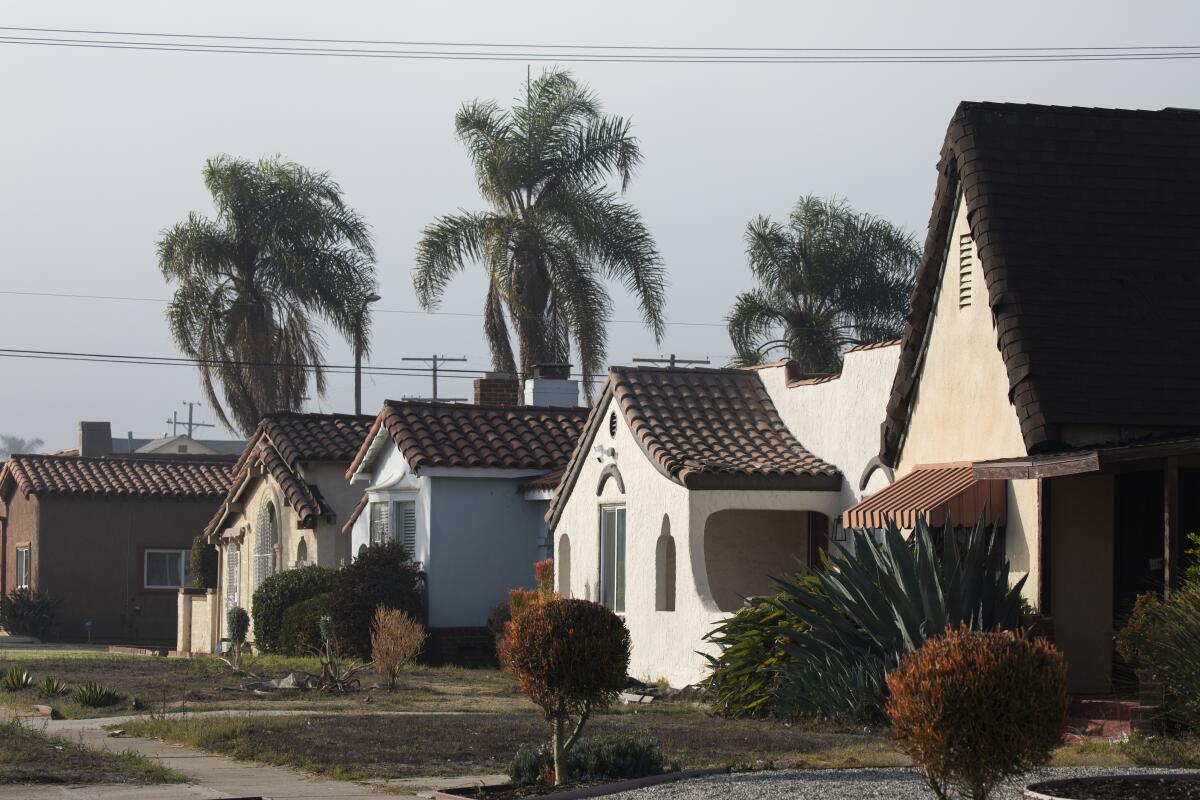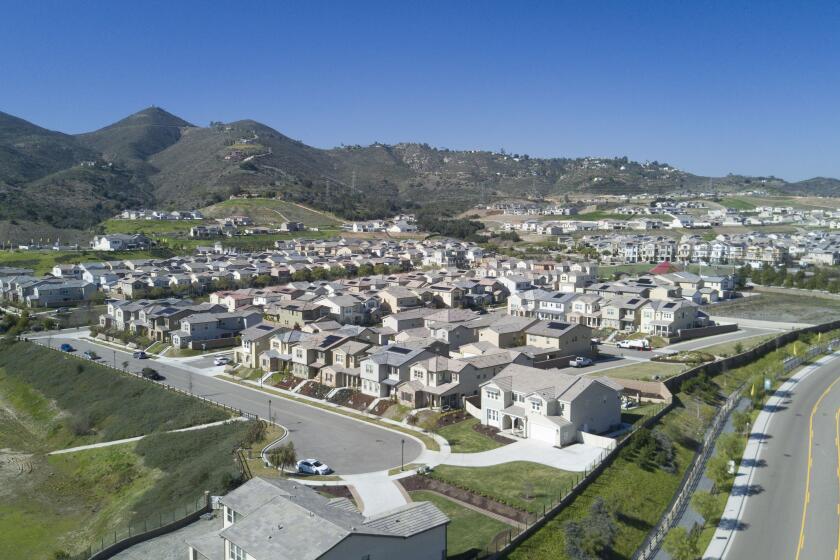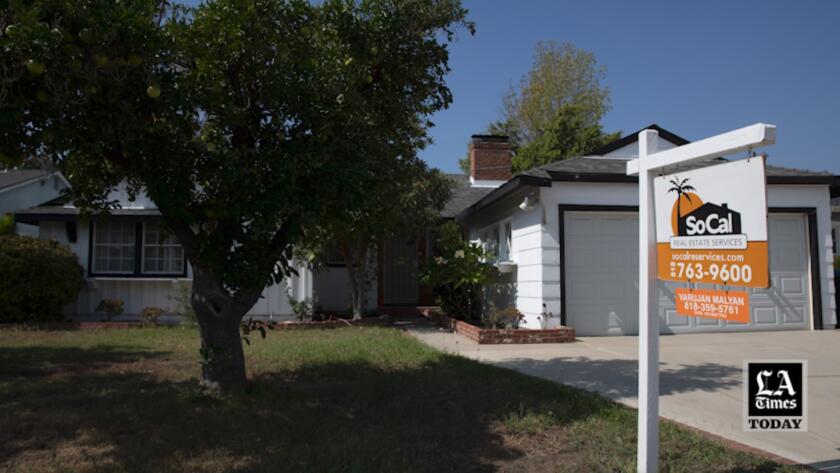Opinion: The $1-million home is becoming the norm in L.A. This is an outrage we could have prevented

- Share via
The median price of a home in Los Angeles will soon cross a startling threshold: $1 million. The median price of a home in California, meanwhile, is approaching $750,000, according to Zillow. That is more than double the national median and more than triple the figure in Ohio.
This is the definition of housing unaffordability.
Homeownership is becoming farther and farther out of reach for more and more Californians. As of 2019, only 55% of Californians, and just 36% of Black Calfornians, owned a home. The American Dream is increasingly living up to its name — by being no more than a dream — in California.
This isn’t just about homeownership. Renters face proportionate price increases. For the first time, the median monthly rent in the United States rose above $2,000 in the last year, and it’s closing in on $3,000 in California. Many people can’t afford to buy or rent a home here.
The cost of housing is high for many reasons, including the cost of labor and materials and myriad environmental regulations and mandates, many of them important. But chief among the reasons are supply restrictions. As with any other commodity, if you restrict the supply of housing, you can charge more for it.
This is essentially what zoning and other restrictive land-use regulations do. So it’s no wonder that a wealth of empirical evidence has shown that restrictive zoning makes housing more expensive.
The California Environmental Quality Act, known as CEQA, blocks housing and climate-friendly infrastructure. But the governor’s recent reform falls woefully short.
The Los Angeles region has been a prolific producer of such restrictions. A study I led last year found that 78% of residential land in the Greater Los Angeles region and 74% in the city of Los Angeles itself was zoned exclusively for single-family homes, prohibiting apartment buildings and other multifamily developments.
We also found that home prices were correlated with the degree of stringent and exclusionary zoning in every community in the region. So were racial diversity and segregation.
UC Berkeley’s Terner Center modeled six different housing policies for Los Angeles and found that the single intervention with the biggest impact on supply growth was loosening density restrictions.
Yes, California has eased single-family zoning, the ultimate density restriction, by allowing more “accessory dwelling units” — backyard cottages, in-law units and the like — and through “plex” reforms, which allow homeowners to subdivide and redevelop parcels for duplexes and four-plexes. But these measures are too modest to bend this wicked cost curve.
What we need is deeper density, more multifamily housing and “missing middle” developments that provide a variety of designs suitable to different incomes. We need localities to allow it, and we need the state to mandate it.
What’s at stake is nothing less than the old notion that people born on the lower rungs of the income and wealth ladder can climb higher, the only limit being their ambition and effort. Since World War II, a prominent pillar of this widespread belief has been homeownership. New-Deal-era laws, financial institutions and the GI Bill created the 30-year mortgage, and suburban developers sold homeownership to tens of millions of (mostly white) Americans.
It worked. In 1940, just 44% of Americans owned their own home. By 1950, that figure had reached 55%, and it steadily climbed in every subsequent decade until the subprime mortgage crisis of 2007. By 2000, 67% of Americans owned their own home.
These figures, however, mask enormous disparities. In 2020, white homeownership reached a postwar peak of 75%, while Black homeownership lagged far behind at 44%, only slightly higher than it was in 1970, the year the Fair Housing Act took effect.
Huge generational disparities also persist. Older Americans are far more likely to own their homes; younger generations are struggling to catch up.
L.A., San Francisco and other cities need massive private development to supply homes and reduce homelessness. That’s why reforms like SB 9 fail.
One major obstacle to closing these gaps is that the cost of homeownership has soared relative to incomes. According to data from the Federal Housing Finance Agency, the price of housing in the United States rose an average of 4.6% per year from 1975 through 2022, outpacing economic growth and wages. The rate in California was an astonishing 6.7% a year, higher than in any other state.
While it’s true that housing appreciation hasn’t matched the stock market — the S&P 500 rose almost 12% annually on average during the same period — this also underscores the problem. Housing and shelter are a human necessity; stocks are not. And yet housing in the United States and particularly California has become an investment vehicle available to far fewer of us.
For many Americans fortunate enough to own a home, it’s their largest investment — a nest egg for retirement or an asset to borrow against to raise cash for an emergency or a child’s college education. Many homeowners therefore place a premium on maximizing not just the present value of their asset but also its future appreciation.
This is why homeowners not only upgrade kitchens, cabinets and bathrooms, but also fight against multifamily housing, affordable housing and homeless shelters in their neighborhoods and communities in an effort to protect their investments. These “homevoters” will fight to the hilt to prevent any loosening of zoning restrictions.
Overcoming this impulse and undoing restrictive zoning won’t make housing affordable or revive the American Dream on its own. If we don’t, however, the dream will become an impossibility for most of us.
Stephen Menendian is the assistant director and director of research at UC Berkeley’s Othering and Belonging Institute.
- Share via
Watch L.A. Times Today at 7 p.m. on Spectrum News 1 on Channel 1 or live stream on the Spectrum News App. Palos Verdes Peninsula and Orange County viewers can watch on Cox Systems on channel 99.
More to Read
A cure for the common opinion
Get thought-provoking perspectives with our weekly newsletter.
You may occasionally receive promotional content from the Los Angeles Times.













